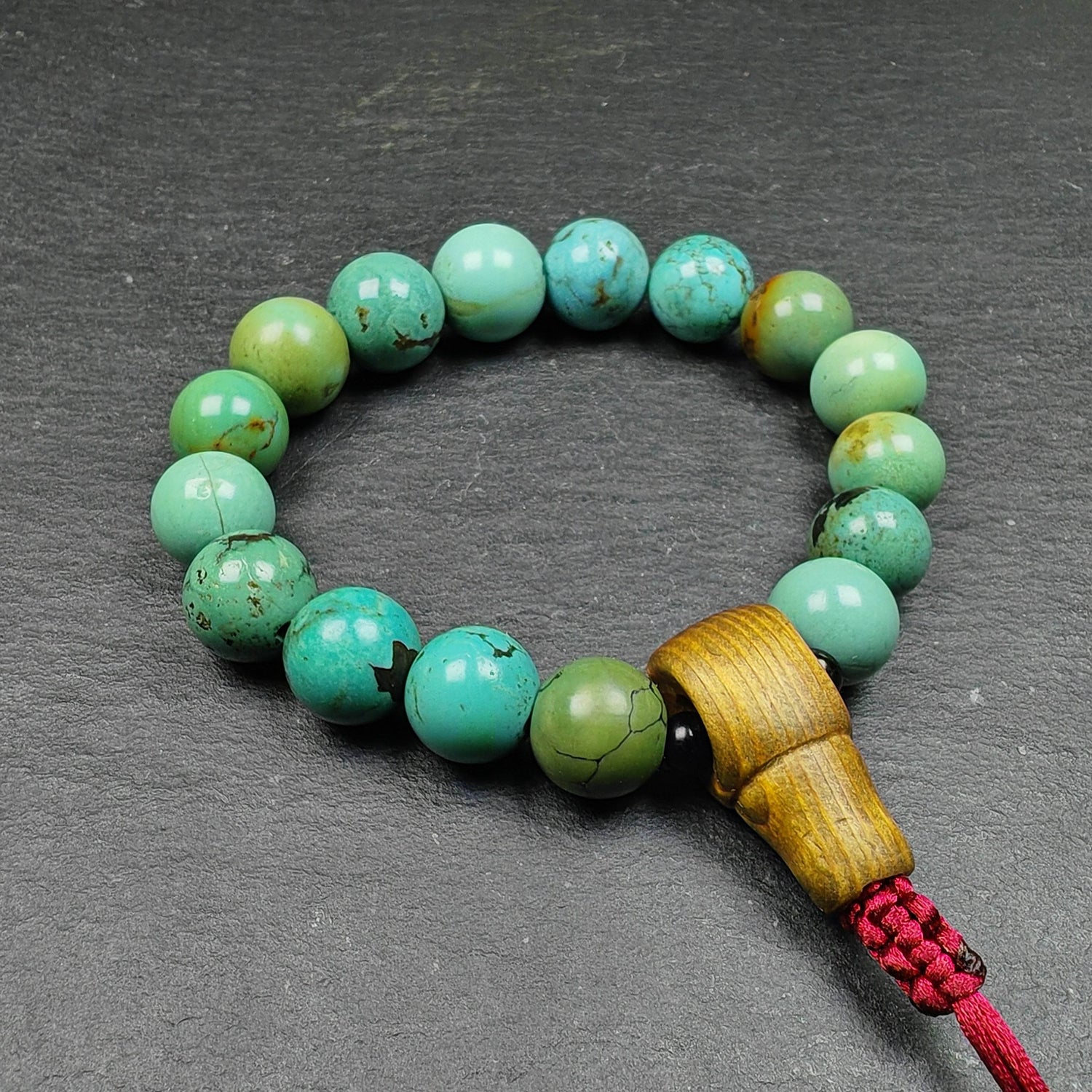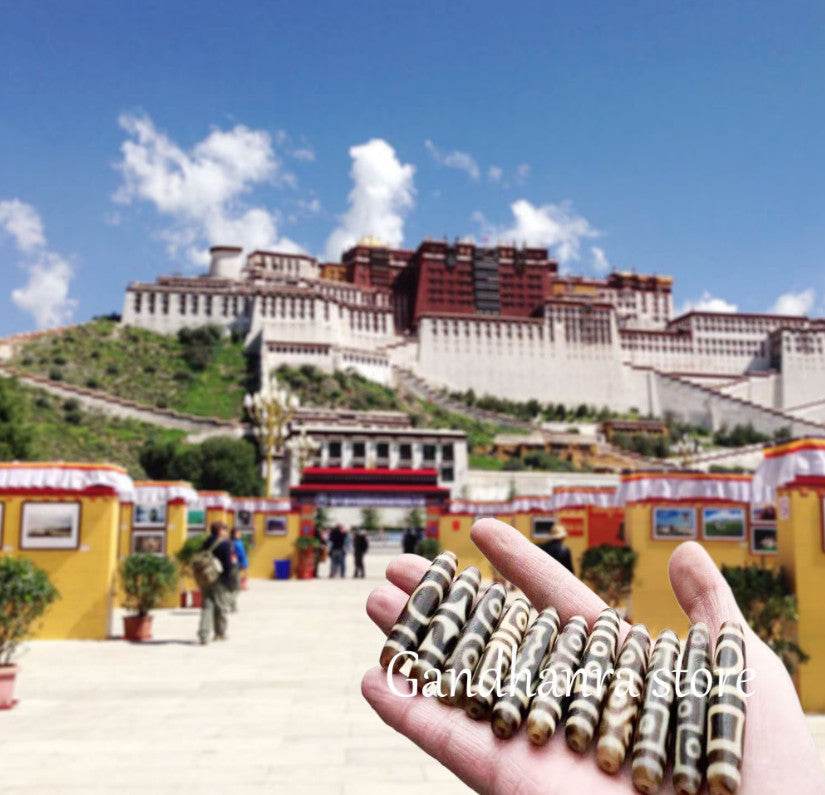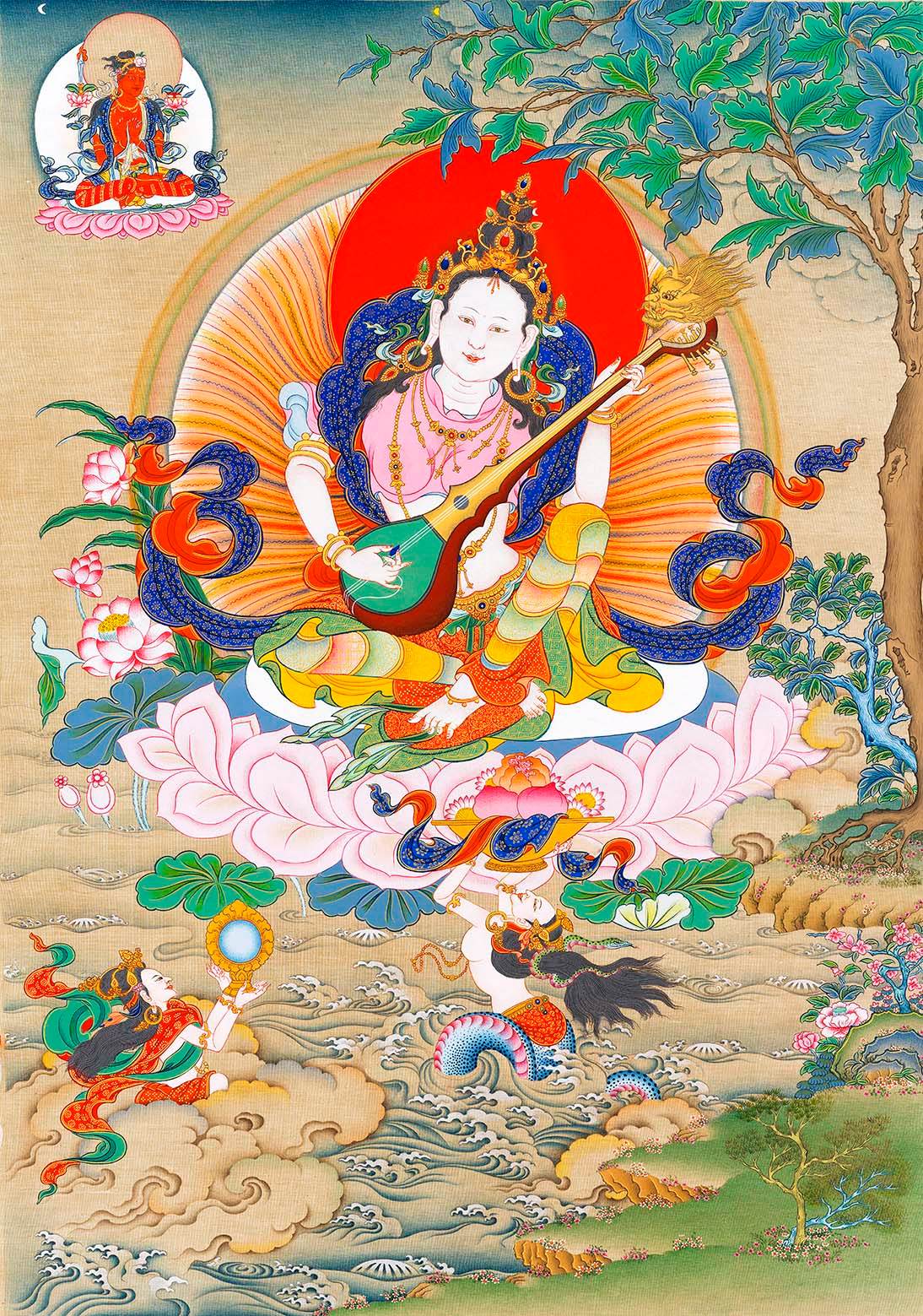
"Pink-White Peach Blossoms" ▎ The Romance of Tibetan Culture

Peaches on the Altar
From: Portraits of the Kadampa Masters: Chen-ngawa Tsultrim Bar
Late 18th century, Rubin Museum Collection
Note: Chen-ngawa Tsultrim Bar (Tibetan: སྤྱན་སྔ་བ་ཚུལ་ཁྲིམས་འབར་, 1038–1103)

The Goddess Saraswati Holding a Pink Peach and Musical Instruments
From: A Series of Thangka Paintings Depicting the Life of Lobsang Tenpai Gyaltsen
19th century, Private Collection
Note: Lobsang Tenpai Gyaltsen (Tibetan: བློ་བཟང་བསྟན་པའི་རྒྱལ་མཚན་, 1819–1871) was a renowned Gelug scholar-monk from the Amdo region.

Peach Blossoms and Snow Mountains in Nyingchi
Photo by: 12FLOORS AGUA
The female monastery's incarnation as a wild boar
A Fierce Wild Boar, Its Body Cloaked in Flames
The soldiers preparing to raid Samding Monastery trembled with fear at this sight.
When people speak of the 7th Samding Dorje Pakmo
(Tibetan: བསམ་སྡིངས་རྡོ་རྗེ་ཕག་མོ་༠༧ཆོས་སྒྲོན་དབང་མོ་, 1708–1753),
they often recount the legend of "the female monastery master manifesting as a wrathful wild boar"—
regarded as proof that successive Samding Jetsünmas
are none other than emanations of Vajravārāhī
(the Diamond Sow, or Vajravarahi).

"Samding Monastery by Lake Yamdrok"
Photographed by Sir Charles Bell between 1920 and 1921
Held at the Pitt Rivers Museum, University of Oxford

"Mandala of Vajravārāhī"
Mid-14th century
Virginia Museum of Fine Arts
Detail: The sow-headed aspect on Vajravārāhī's right side
This "accomplished mistress of many attainments"
During her earthly life,
she once gave teachings by the shores of Lake Yamdrok,
seeing its islands as the Five Wisdom Dakinis,
and the multicolored sacred waters as Vajravārāhī's mandala.
The interplay of five primary hues
gave birth to secondary colors—
thus the lake's surface shimmered
with ever-changing radiance.

"The Yarlung Tsangpo River, Yamdrok Lake, and Sacred Landscapes"
From The Wise Collection held at the British Library
Late 1850s (dating contested)
Peach and Pink
Flesh-Red, Blood-Red, the Color of Flames / Pale-Red, Pink-Red, the Hue of Fruit
In classical Tibetan color symbolism,
pink is often likened to bhikṣuṇī –
"The immaculate pink: untainted clarity,
yin-principled yet radiant with sentience."
Clouds, sacred lotuses, blossoms,
ripened fruits, silk robes,
and divine aureoles –
these are painted in pink
throughout Tibetan art.

"The Great Siddha Avadhūtipa"
Late 17th century • Khyenri School • Rubin Museum of Art
Detail: Green Tārā amidst pink-hued clouds
Peaches in white and pink are attributes held by Han Buddhist monks
(sometimes depicted alongside pomegranates symbolizing 'fertility' and 'sacred youth').
This artistic characteristic is primarily associated with Central Plains traditions.
In Tibetan culture, peaches typically represent longevity, auspiciousness, and prosperity.

"Sixteen Arhats: Dharmatala and the Han Monk"
Mid-to-late 16th century, Erie Art Museum Collection
Detail: The Han monk holding fruit
Pure white / yellow / pink-white peaches
correspond to different scenes and endeavors in paintings.
Yet Tibet's native wild peaches were never of these hues
(their ripe green fruits bore but a faint pink glow).
When peach blossoms bloom,
the villages are awash in pink-white splendor.

From the Sacred Yamdrok to the Peach Forests of Kongpo
In Lhoka, peaches symbolize bountiful harvests and are used in sang offerings(The Ngari region likewise practices offering peaches and apricots in sang rituals).
In Nyingchi, peach blossoms and fruits inspire folk songs:
"Sweet to taste are the peaches, fair to see are the blooms"
"Want fresh fruit? Simply plant the seeds"
"Flowers like fair maidens, ripe fruits for sweethearts"
From holy Yamdrok to Kongpo's peach groves
This charming pink delights both gods and mortals

Photo by: 12FLOORS AGUA
The 1st Nyingchi Peach Blossom Festival in 2003
to
The 22nd Nyingchi Peach Blossom Festival this year
"Nyingchi Peach Blossoms" have become a world-renowned tourism symbol.
Every year from March to April,
travelers flock to witness this spectacle.
Nyingchi is no Jiangnan -
it possesses scenery of unparalleled uniqueness.

Photo by: 12FLOORS AGUA
Tibet's seasons wear distinct botanical robes:
Spring's peach blossoms pulse with vitality,
Summer's willow branches whisper coolness,
Autumn's abundant fruits proclaim harvest,
Winter's evergreen bamboo reveals mind's nature.
Falling peach petals - pink-white garments -
beckon the goddess' arrival,
just as the multicolored lake exhales
its mysterious breath:
soothing all beings
with tender grace.
 The Pink of Peach Blossoms
The Pink of Peach BlossomsPhoto by: 12FLOORS AGUA







3 comments
smomck
8zx726
mAnP jVcxgO CyZsa lBjgv TndGBgq